America’s age-old love affair with ice cream appears to be winding down.
Consumption of regular dairy ice cream, which does not include frozen yogurt, sherbet or non- and low-fat ice creams, has been falling for years, according to the US Department of Agriculture.
In 1986, the average American ate 18 pounds of regular ice cream, according to the USDA. By 2021, the most recent year of the data, that was down a third to just 12 pounds per person.
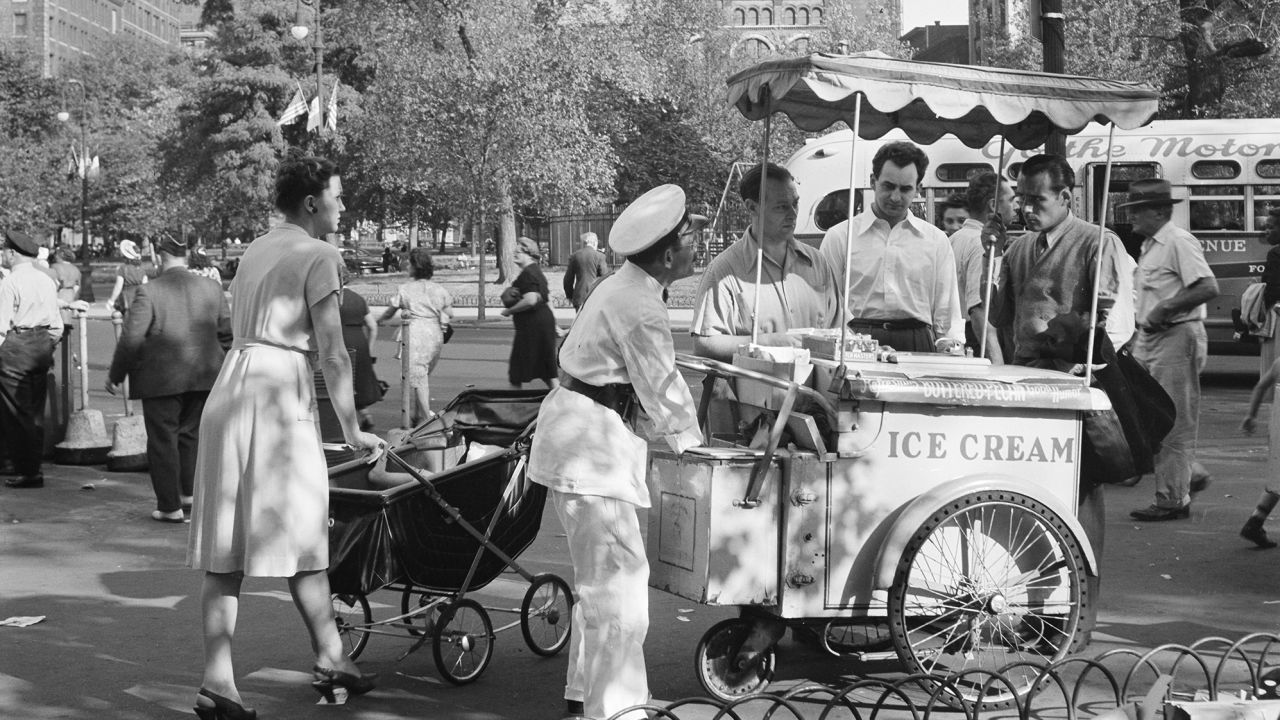
For years, ice cream was more than a frozen dessert: It was a lifeline for American brewers during Prohibition and a means to boost morale among troops during World War II. By the 1950s, the sweet, creamy treat had become an American treasure.
But like full-fat milk, soda, red meat and other former heroes of the American diet, ice cream has been scrutinized for its impact on health and the environment. After peaking in the 1940s, per capita availability of regular ice cream started to decline in the 1990s and through the 2000s as health-conscious consumers — including a member of the Baskin Robbins family — turned on the sugary, fatty food, or started treating it as an occasional, pricey treat.
From beer to ice cream
For years, ice cream held a prized spot in America’s cultural and culinary history. A few key moments helped propel it into prominence in the 20th century, noted Matt Siegel, author of The Secret History of Food.
First, there was Prohibition. When alcohol became illegal, “a lot of early American breweries turned to making ice cream,” Siegel said. Both Anheuser-Busch and Yuengling started making the treat. “Ice cream’s ingredients — fat, sugar — made a decent substitute for alcohol for the drowning of one’s emotions,” Siegel said. Ice cream is “the ultimate comfort food.”
Drinkers swapped a pint for a scoop, and for ice cream makers, Prohibition was a boon.
“Manufacturers are quite optimistic over the trade outlook and are agreed in the opinion that this year will show a big increase over last year,” noted a May 1923 issue of Ice Cream Field, an ice cream trade publication. “In fact they say that the ice cream business is bound to increase in volume from year to year as more people are using ice cream since the coming in of nation-wide prohibition and the going out of the saloon.”
The interest in ice cream continued in World War II, buoyed by the government’s use of the frozen dessert to help boost morale.
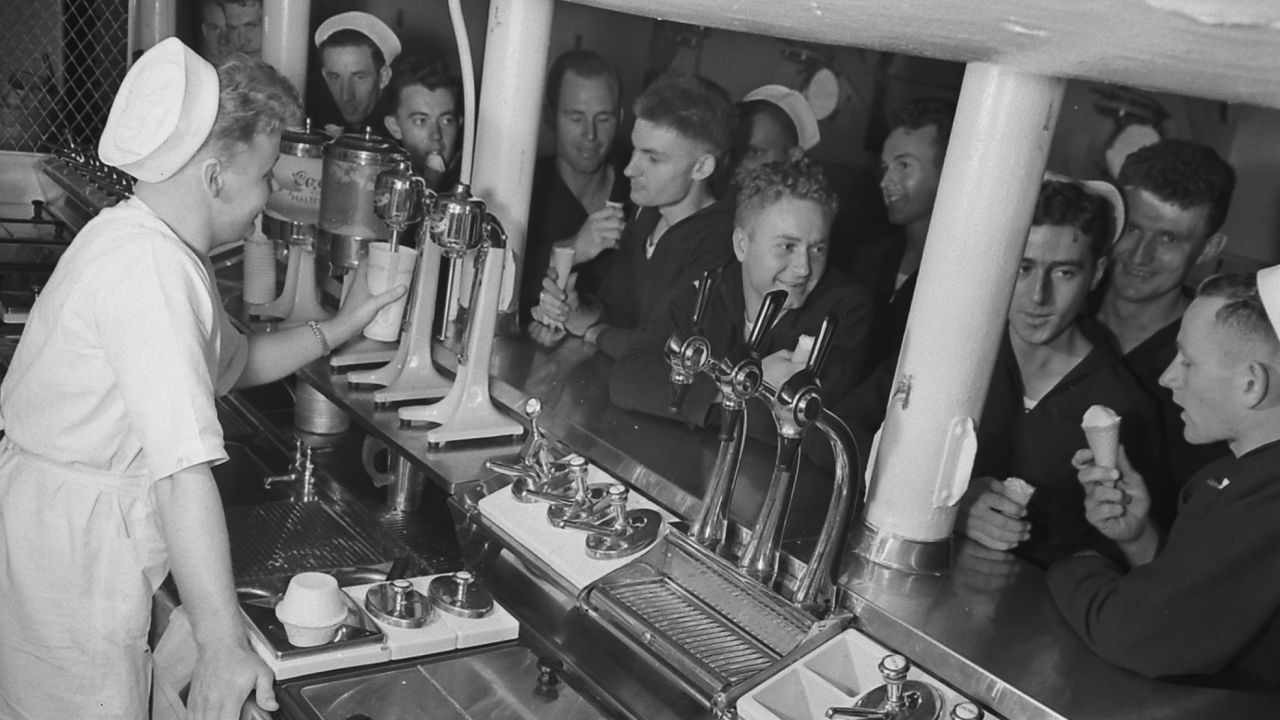
“We built pop-up ice cream factories on the front lines, delivered individual ice cream cartons to foxholes and spent more than a million dollars on a floating ice cream barge that patrolled the Pacific delivering ice cream,” Siegel said. In 1946, the US produced the equivalent of 22.7 pounds of ice cream per person, according to the USDA.
That “exposed mass amounts of troops to ice cream,” Siegel said, giving soldiers a brief, cool respite, and “fed the industry behind ice cream.”
After the war, the new interstate highway system and the proliferation of freezers for individual use helped make ice cream more available, on the road and at home, he noted. “Ice cream, and everything surrounding it, was very much a novelty,” Siegel said. “It was special.”
But the thrill of a sundae or a cone isn’t the same as it was back then.
“I think part of the reason that ice cream has faded is that novelty has worn off,” he said. And with concerns rising about the impact of sugar on health, ice cream’s image as a wholesome treat is melting away.
It probably didn’t help, Siegel noted, that one man leading the charge against ice cream and dairy production was John Robbins, the one-time heir apparent to the Baskin-Robbins’ ice cream kingdom.
Health concerns
Following the untimely death in 1967 of Burt Baskin, Robbins’ uncle and the ice cream empire’s co-founder, “I was starting to believe that the more ice cream you ate, the more likely you were to have heart disease, diabetes, and obesity,” Robbins said, according to an article in Life Extension magazine.
Robbins walked away from the family business decades ago, instead devoting his attention to heralding plant-based diets and animal rights.
Robbins “has an audience of hundreds of thousands for his animal-rights, pro-environment, vegetarian message,” the New York Times wrote in 1992, the same year Robbins published a book about eating for a healthier planet, which boasts recommendations from Deepak Chopra and Marianne Williamson.
Over the years, concerns about sugar (and sustainability) have become more common.
Lucas Fuess, senior dairy analyst at Rabobank, suspects that the health issue is one reason for ice cream’s decline.
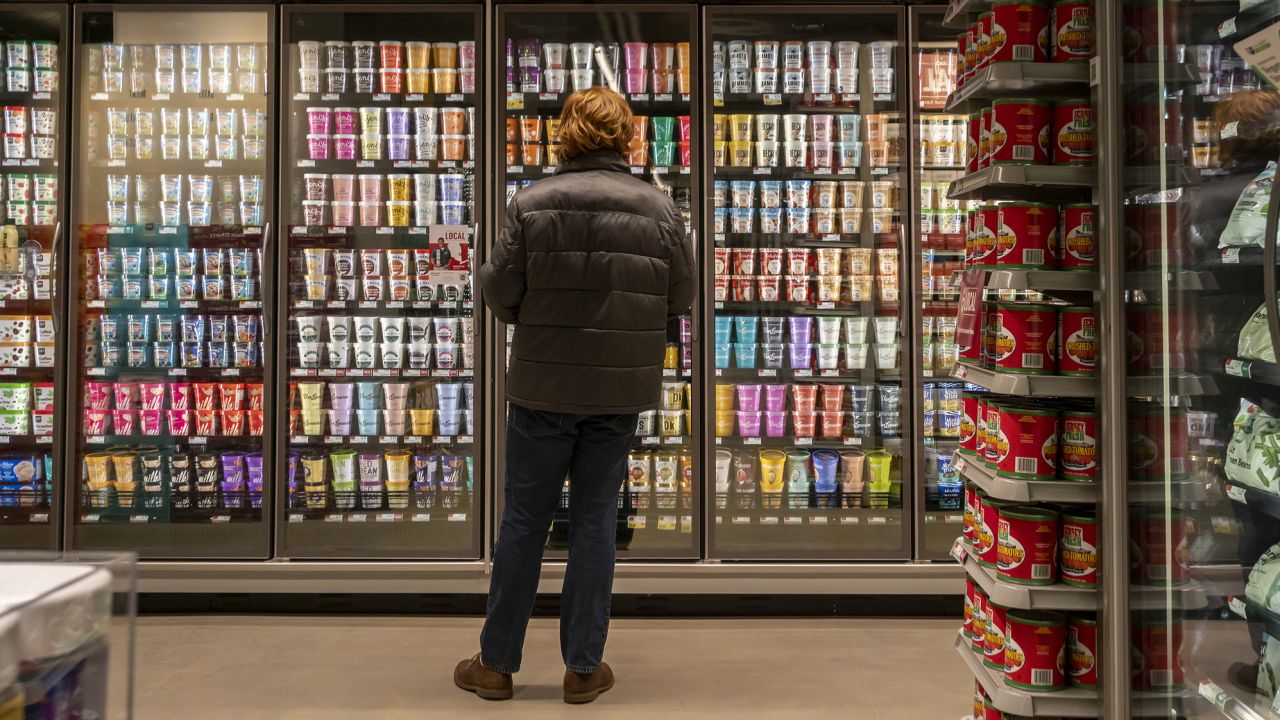
Indeed, low-fat and nonfat ice cream consumption has fared better from 1986 to 2021, rising from 6.1 pounds per person per year in 1986 to 6.4 pounds in 2021, according to the USDA’s data.
Then there’s the fact that people have far more dessert options now than they had in the past, Fuess pointed out. In the grocery store, ice cream is up against packaged cookies, candy and cake mixes. The freezer aisle contains frozen pies, cheesecake and more.
“As people have more choice and more options, and as they become increasingly health conscious, ice cream has not won that battle,” he said.
Others think it’s not so much that Americans don’t like ice cream anymore. It’s just that their tastes have evolved. These days, more people crave premium options and specific flavors, which end up costing more — as their tastes have gotten more expensive, they’re buying less.
Smaller, premium pints
Over the years, ice cream has started to come in smaller sizes, said John Crawford, VP of client insights for dairy at Circana, a consumer research firm.
“There’s been a shift from these large family sizes of ice cream to the more individual” packages,” he said. It could be that the per capita reduction is reflecting the fact that “you’re buying less volume each time you buy.”
Circana has recorded a drop in volume in recent years. According to its data, dairy ice cream purchases by volume have dropped by about 8% from 2018 to 2022. In that time, unit sales have also fallen — but sales by dollar have gone up, showing that people are spending more for less.
The evolution in sizes has accompanied a growth in the types and flavors of ice cream, he noted.
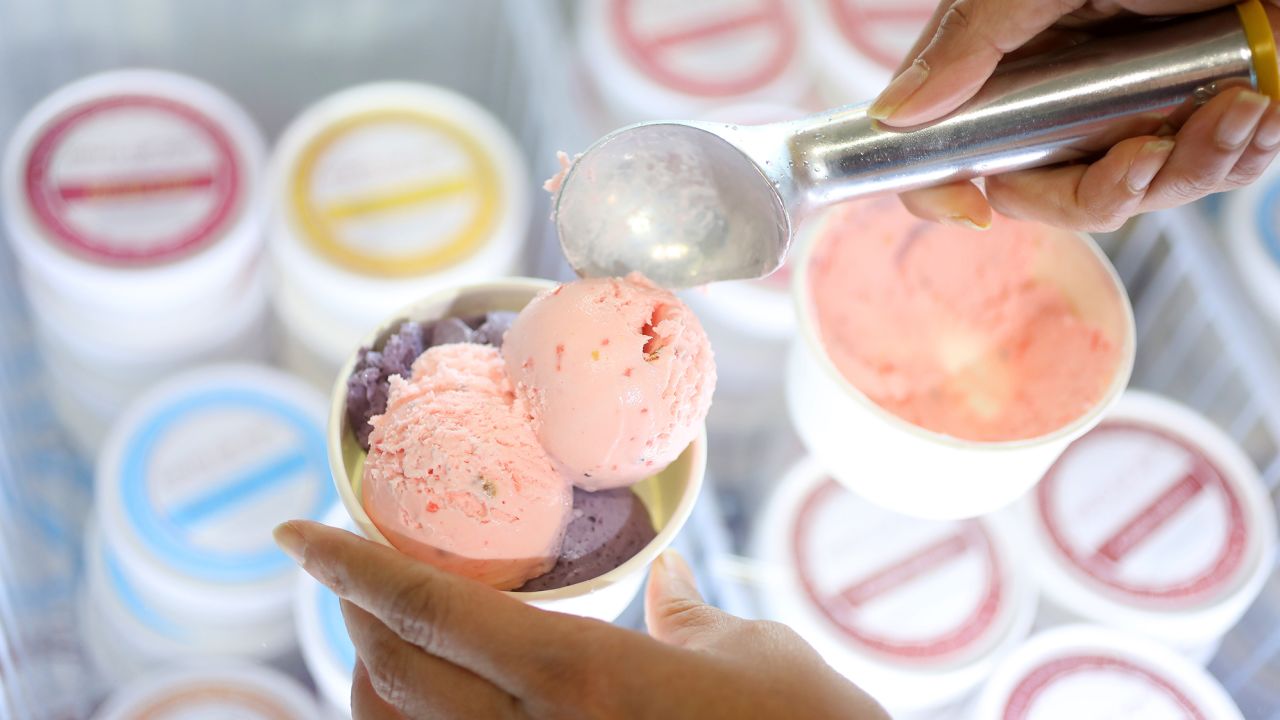
“As folks have shifted to the smaller sizes, that’s enabled there to be a flavor [and] variety explosion,” he said. “When you’re buying the big bulk ice creams for the family, you’re buying … vanilla, you’re buying chocolate, you’re buying strawberry.” With smaller sizes, people can try new flavors or buy what they like, without worrying about whether it’ll appeal to everyone.
But smaller sizes are more expensive than bulk options, especially when they come from premium brands.
In the 2000s, premium ice cream and gelato brands like Jeni’s, Van Leeuwen and Talenti popped up and got popular. The brands tout flavors from Earl Grey to goat cheese with cherries.
The shift means that ice cream could be “more of a treat than it is a staple that you would potentially have in your freezer,” Crawford said.
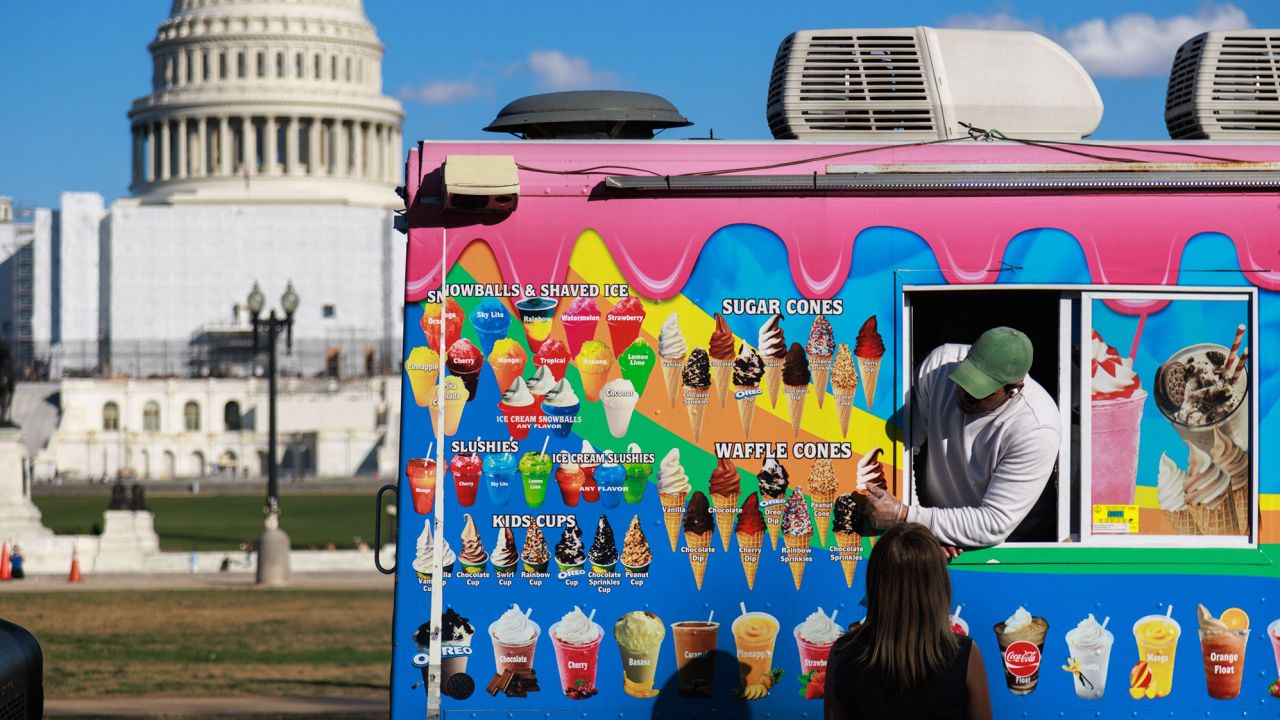
Even though the trends may be against traditional ice cream, it’s still a major sector. In 2022, dairy ice cream sales amounted to about $7 billion, according to Circana. And anyone inching through the line at a local scoop shop on a hot summer night still knows the thrill of waiting for a scoop.
Deborah Lee owned an ice cream shop, Blue Ridge Ice Creams, in North Carolina for about 28 years before retiring. Today, she teaches aspiring ice cream entrepreneurs how to make ice cream.
The timelessness of the product is “why I went into ice cream,” she added.”I think it’s here to stay.”
"Love" - Google News
July 17, 2023 at 12:06AM
https://ift.tt/u9JfkeM
How America fell out of love with ice cream - CNN
"Love" - Google News
https://ift.tt/6498Pf5
https://ift.tt/3KSt6TR
Bagikan Berita Ini














0 Response to "How America fell out of love with ice cream - CNN"
Post a Comment